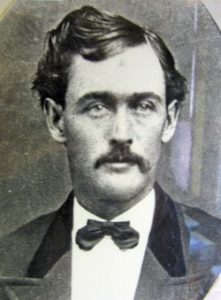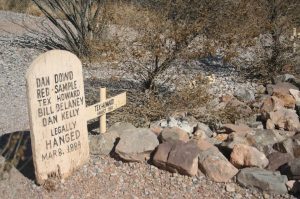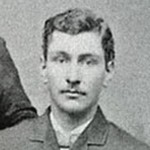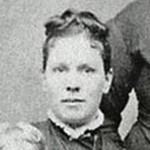posse
 Many men helped to tame the wild west, but unfortunately things didn’t always go exactly as the lawmen planned. Billy Daniels was a pretty typical lawman, but like the thousands of courageous young men and women who helped tame the Wild West, whose names and stories have since been largely forgotten, Billy was not a well remembered lawman. For every Wild Bill Hickok or Wyatt Earp, who have been immortalized by the dramatic exaggerations of dime novelists and journalists, the West had dozens of men like Billy Daniels, who quietly did their duty with little fanfare, celebration, or thanks.
Many men helped to tame the wild west, but unfortunately things didn’t always go exactly as the lawmen planned. Billy Daniels was a pretty typical lawman, but like the thousands of courageous young men and women who helped tame the Wild West, whose names and stories have since been largely forgotten, Billy was not a well remembered lawman. For every Wild Bill Hickok or Wyatt Earp, who have been immortalized by the dramatic exaggerations of dime novelists and journalists, the West had dozens of men like Billy Daniels, who quietly did their duty with little fanfare, celebration, or thanks.
On December 8, 1883, five desperadoes led by Daniel “Big Dan” Dowd, rode into the booming mining town of Bisbee, Arizona. Dowd had heard that the $7,000 payroll of the Copper Queen Mine would be in the vault at the Bisbee General Store. He had planned to surprise the store owners, and make off with the payroll, but things didn’t go exactly as planned. When the outlaws barged into the store with their guns drawn, demanding the payroll, they discovered, to Dowd’s disappointment, that they were too early. The payroll hadn’t arrived yet. The outlaws quickly gathered up what money there was, somewhere between $900 to $3,000, and took valuable rings and watches from the customers who just happened to be in the store. After the robbery, for reasons that are unclear…but possibly, anger…the robbery turned into a slaughter. When the five desperadoes rode away, they left behind four dead or dying people, including Deputy Sheriff Tom Smith and a Bisbee woman named Anna Roberts.
The people of Arizona were stunned. The people had cooperated with the outlaws. There was no reason to kill  those people. The killings were a completely senseless show of brutality. The newspapers called it the “Bisbee Massacre.” The sheriff quickly organized citizen posses to track down the killers, placing Deputy Sheriff Billy Daniels at the head of one. Unfortunately, the posses soon ran out of clues and the trail grew cold. Most of the citizen members gave up, but not Daniels. He stubbornly continued the pursuit alone. Daniels eventually learned the identities of the five men from area ranchers and began to track them down one by one.
those people. The killings were a completely senseless show of brutality. The newspapers called it the “Bisbee Massacre.” The sheriff quickly organized citizen posses to track down the killers, placing Deputy Sheriff Billy Daniels at the head of one. Unfortunately, the posses soon ran out of clues and the trail grew cold. Most of the citizen members gave up, but not Daniels. He stubbornly continued the pursuit alone. Daniels eventually learned the identities of the five men from area ranchers and began to track them down one by one.
Daniels found one of the killers in Deming, New Mexico, and arrested him. He then learned from a Mexican informant that the gang leader, Big Dan Dowd, had fled south of the border to a hideout at Sabinal, Chihuahua. Daniels went under cover, disguising himself as an ore buyer. He tricked Dowd into a meeting and took him prisoner. A few weeks later, Daniels returned to Mexico and arrested another of the outlaws. Other law officers apprehended the remaining two members of the gang. A jury in Tombstone, Arizona, quickly convicted all five men. They were sentenced to be hanged simultaneously. As the noose was fitted around his neck on the five-man gallows, Big Dan reportedly muttered, “This is a regular killing machine.”
Daniels ran for sheriff the net year, but oddly lost. I would think that a hometown hero would be a shoo-in. After all he had done for the town, it would seem that being the sheriff was a thankless job. He found a new  position as an inspector of customs. The job required him to travel all around the vast and often isolated Arizona countryside, where various bands of hostile Apache Indians were a serious danger. Early on the morning of June 10, 1885, Daniels and two companions were riding up a narrow canyon trail in the Mule Mountains east of Bisbee. Daniels, who was in the lead, rode into an Apache ambush. The first bullets killed his horse, and the animal collapsed, pinning Daniels to the ground. Trapped, Daniels used his rifle to defend himself as best he could, but the Apache quickly overwhelmed him and cut his throat. A mere two years after Arizona Deputy Sheriff William Daniels apprehended three of the five outlaws responsible for the Bisbee Massacre, it was an Apache Indians ambush that would end his life. His two companions escaped with their lives and returned the next day with a posse. They found Daniels’ badly mutilated corpse but were unable to track the Apache Indians who murdered him. I guess they lacked Daniels’ under cover or investigative skills.
position as an inspector of customs. The job required him to travel all around the vast and often isolated Arizona countryside, where various bands of hostile Apache Indians were a serious danger. Early on the morning of June 10, 1885, Daniels and two companions were riding up a narrow canyon trail in the Mule Mountains east of Bisbee. Daniels, who was in the lead, rode into an Apache ambush. The first bullets killed his horse, and the animal collapsed, pinning Daniels to the ground. Trapped, Daniels used his rifle to defend himself as best he could, but the Apache quickly overwhelmed him and cut his throat. A mere two years after Arizona Deputy Sheriff William Daniels apprehended three of the five outlaws responsible for the Bisbee Massacre, it was an Apache Indians ambush that would end his life. His two companions escaped with their lives and returned the next day with a posse. They found Daniels’ badly mutilated corpse but were unable to track the Apache Indians who murdered him. I guess they lacked Daniels’ under cover or investigative skills.
 As I continue to read about my Great Great Aunt Tessie, Teresa Elizabeth Spencer Davis, I continue to be amazed at the kind of people she and her husband, William Jonathan Davis were. They raised nine children, losing a set of twins at birth, which would have made eleven children. Aunt Tessie would go on to outlive seven of her eleven children, passing away on April 21, 1944 at the age of 79 years. Her husband, William, who had been raised on the high seas, after losing both of his parents by the time he was seven, and then his Uncle Walter stepped up to raise him and his brother on his merchant ship, passed away on August 11, 1925 at the age of 69 years, having been proceeded in death by five of his children.
As I continue to read about my Great Great Aunt Tessie, Teresa Elizabeth Spencer Davis, I continue to be amazed at the kind of people she and her husband, William Jonathan Davis were. They raised nine children, losing a set of twins at birth, which would have made eleven children. Aunt Tessie would go on to outlive seven of her eleven children, passing away on April 21, 1944 at the age of 79 years. Her husband, William, who had been raised on the high seas, after losing both of his parents by the time he was seven, and then his Uncle Walter stepped up to raise him and his brother on his merchant ship, passed away on August 11, 1925 at the age of 69 years, having been proceeded in death by five of his children.
In life they were a well known and much respected couple in the community of Rushville, Nebraska. One of their prized possessions was a genuine Surrey with the fringe around the top, and a driving team of high spirited Sorrel horses. They were active in the community literary, debates, Sunday School, picnics, and Fourth of July celebrations at Palmer’s Grove. They were members of modern woodman and royal neighbors. William served on school and election boards, was elected Justice of the Peace, performed a marriage ceremony, and helped bury several people, acting as both mortician and preacher, He was supervisor of the Magnesium Road built north of the Colclessor Bridge. They were often called to neighbors homes in times of sickness and emergencies. The young son of Emile Sandoz, called them when his father was shot. William gave first aid until the doctor arrived, then formed a posse to help run down the killer. People traveling by team and wagon from the South Sandhills spent many nights in their home and were always welcome. They also allowed many peddlers to  stay at their home, and the peddlers always left a gift as a token of their appreciation.
stay at their home, and the peddlers always left a gift as a token of their appreciation.
They were all gifted musicians. Aunt Tessie played the organ and sang beautifully. The children played the organ, violin, accordion, mouth harp, horns, and drums. In fact, they formed an orchestra and played at dances all over the area. They even had an organ that could be folded up like a valise in the back of a buggy. They often traveled miles to play all night until dawn. I don’t know about you, but their life wears me out, just thinking about it, much less living it, but to them, it just seemed like the normal way to live.

